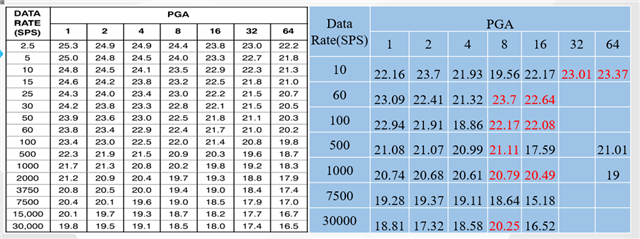Hi,
About the ENOB calculation, most of the equation of the datasheet is the same with AD1256 datasheet:
ENOB=ln(FSR/RMS Noise)/ln2
But I found the book of the data converter which describes the ENOB equation is as this

So could you please help to analyze why the common equations of ENOB has not minus 1.79?
In addition, when PGA>8 during using ADS1256, the ENOB value is higher than the datasheet listed. What about the possible reasons?

Best regards
kailyn

